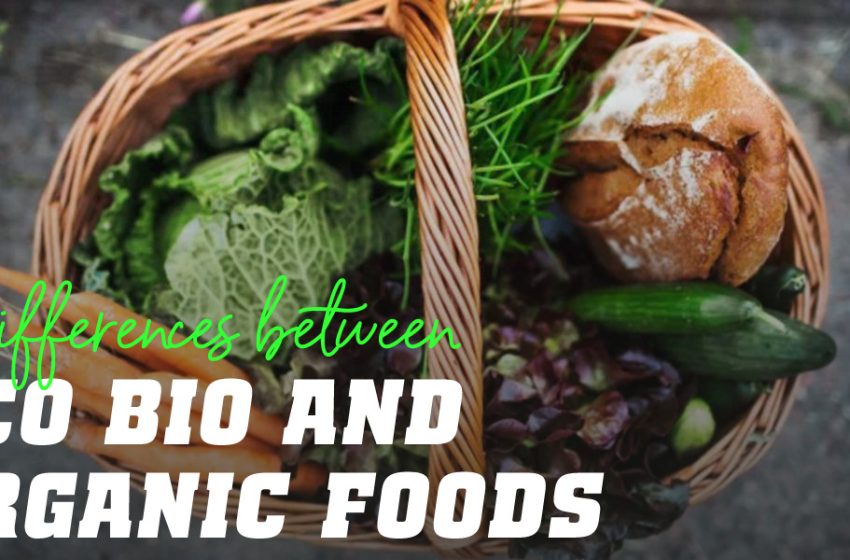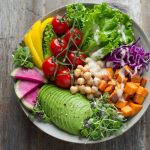Eco Food for Beginners: How to Start Eating Sustainably Without Sacrificing Taste

In today’s fast-paced world, many of us are becoming more conscious about the impact our choices have on the environment. One of the most significant changes we can make is adjusting how we eat. The term eco food has been gaining traction as people realize that the food they consume can either contribute to environmental harm or help preserve the planet. But for many, the shift to eco-friendly eating can feel overwhelming. Where do you begin? How do you make sustainable food choices without giving up delicious meals?
The good news is that eco food doesn’t mean compromising on flavor. With a little knowledge and a few simple changes, you can start eating sustainably while still enjoying a diverse, vibrant, and tasty diet. This guide will walk you through the basics of eco food and show you how to get started with a sustainable, environmentally-friendly eating lifestyle without sacrificing the foods you love.
What is Eco Food?
Before diving into the practical steps, it’s essential to understand what eco food really means. Eco food is food that’s produced with minimal impact on the environment. This includes food that is organic, locally sourced, seasonally grown, and ethically harvested. The focus is on sustainability—ensuring that our food systems do not deplete natural resources or cause long-term harm to ecosystems.
Eco food is about making choices that reduce waste, avoid harmful chemicals, and promote biodiversity. By choosing eco food, you’re supporting a system that respects the planet, farmers, and future generations.
Why Eco Food Matters
Our current global food system is one of the largest contributors to climate change. From greenhouse gas emissions caused by large-scale livestock farming to the pollution of waterways by pesticides, the way we grow, process, and transport food has far-reaching environmental consequences.
By embracing eco food, you’re reducing your carbon footprint, protecting natural resources, and helping combat climate change. Sustainable eating supports local economies, enhances biodiversity, and promotes healthier living. As a beginner, small changes can make a big difference over time, and eco food offers an opportunity to enjoy delicious meals while contributing to a healthier planet.
How to Start Your Eco Food Journey
Transitioning to eco food doesn’t have to be a radical overhaul of your current diet. In fact, starting small and making gradual changes is the best way to build lasting habits. Here’s how to get started with eco food without feeling overwhelmed.
1. Buy Locally Grown Produce
One of the easiest ways to embrace eco food is by purchasing locally grown produce. Food grown close to home typically requires less transportation, reducing its carbon footprint. Local farms are more likely to use sustainable farming methods and provide fresher produce, as it doesn’t have to endure long shipping times.
Visit your local farmers’ market to discover what’s in season in your area. Buying seasonal and locally sourced fruits and vegetables not only supports small farmers but also allows you to enjoy food at its peak flavor and nutritional value.
Tip: Start by replacing a few of your usual grocery items with local alternatives. For example, swap out imported strawberries in the winter for locally grown apples or root vegetables that are in season.
2. Opt for Organic and Pesticide-Free Food
Organic farming avoids the use of synthetic pesticides and fertilizers, which can harm the environment and human health. While not all eco food is necessarily organic, choosing organic options when possible ensures that you’re consuming food free from harmful chemicals and supporting farming practices that are better for the soil and water systems.
Look for organic labels when shopping for produce, dairy, and meat. If organic options are too expensive or unavailable, try focusing on the “Dirty Dozen” list—fruits and vegetables that are most likely to be contaminated by pesticides—and buy these items organic.
Tip: If buying all-organic food isn’t feasible for your budget, prioritize organic for high-pesticide foods like berries, spinach, and apples, and go conventional with foods like avocados, sweet corn, and onions, which tend to have lower pesticide residues.
3. Incorporate More Plant-Based Meals
Meat and dairy production contribute significantly to greenhouse gas emissions, water usage, and land degradation. One of the most impactful shifts you can make toward eco food is incorporating more plant-based meals into your diet. You don’t have to give up meat entirely; even reducing your meat consumption by a couple of days a week can make a significant difference.
Plant-based proteins like lentils, chickpeas, quinoa, and beans are not only more sustainable but also versatile and delicious. By exploring vegetarian or vegan recipes, you’ll discover a wide range of flavorful, satisfying dishes that are kinder to the planet.
Tip: Start with a “Meatless Monday” or try plant-based versions of your favorite meals, such as a vegetable stir-fry, lentil soup, or black bean tacos. Slowly introducing plant-based meals will help you find new flavors and textures without feeling restricted.
4. Reduce Food Waste
A huge part of eating sustainably is minimizing food waste. In the U.S. alone, about 40% of food is wasted, which contributes to methane emissions in landfills and squanders the resources used to produce the food in the first place.
To reduce food waste, plan your meals in advance and only buy what you need. Learn how to store food properly to extend its shelf life, and get creative with leftovers to make new meals. Composting food scraps can also reduce the amount of waste that ends up in landfills and create nutrient-rich soil for gardening.
Tip: Try using the “root-to-stem” cooking approach, where you use all parts of a vegetable—like broccoli stems or carrot tops—in your dishes, reducing waste and getting the most out of your ingredients.
5. Support Ethical and Sustainable Farming Practices
Eco food isn’t just about the environment—it’s also about supporting ethical practices in the food system. This includes choosing fair-trade products that ensure farmers and workers are paid fairly and treated with respect. Look for fair-trade labels on items like coffee, chocolate, and bananas to ensure you’re supporting ethical farming.
Additionally, look for sustainably sourced seafood, such as wild-caught fish or options certified by organizations like the Marine Stewardship Council (MSC). Sustainable fishing practices help maintain healthy fish populations and ecosystems, ensuring that seafood remains available for future generations.
Tip: Educate yourself on ethical labels and certifications. Some common eco-friendly certifications include USDA Organic, Fair Trade, and Rainforest Alliance. These labels can guide your purchasing decisions and help you make informed choices.
6. Cook at Home More Often
One of the most straightforward ways to start eating more eco-friendly food is by cooking at home. Preparing your own meals allows you to control what goes into your dishes, avoid excess packaging, and make the most of fresh, local ingredients. When you cook at home, you’re also more likely to use whole foods rather than processed options, which are often less sustainable and less healthy.
Cooking at home doesn’t have to be time-consuming or complicated. Start by trying simple, plant-based recipes or meals that feature local and organic ingredients. Over time, you’ll develop a deeper appreciation for the ingredients and the joy of preparing meals that are both delicious and sustainable.
Tip: Batch-cook meals for the week to save time and ensure you always have healthy, eco-friendly options on hand. Using leftovers creatively in soups, stews, and salads can also help reduce food waste.
Eco Food and Flavor: They Can Go Hand in Hand
One of the myths about eco food is that it’s bland or boring. But eco-friendly meals can be just as exciting and flavorful as any other cuisine—if not more so! The key is to embrace fresh, seasonal ingredients that pack a punch in terms of taste and nutrition.
Seasonal produce, in particular, shines when it’s at its peak ripeness. Tomatoes in the summer, for instance, are bursting with flavor, while winter squashes are hearty and rich in the colder months. Experiment with herbs, spices, and different cooking techniques to bring out the natural flavors of your ingredients.
Tip: Explore new cuisines and cooking styles to keep your meals interesting. Many global cuisines, like Mediterranean, Indian, and Mexican, are naturally plant-based and sustainable, offering plenty of inspiration for eco-friendly meals that are big on flavor.
Conclusion
Eating sustainably doesn’t mean sacrificing taste or pleasure. In fact, eco food can introduce you to a world of new flavors, textures, and culinary experiences. By making small, intentional changes—buying local, opting for organic, reducing food waste, and incorporating more plant-based meals—you can start your eco food journey with confidence. It’s not about perfection, but about progress. Every step you take toward sustainable eating supports the environment, promotes healthier communities, and contributes to a more just food system.
Eco food is a powerful way to enjoy delicious, wholesome meals while making a positive impact on the planet. The best part? You can start today.


